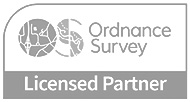Since our beginnings in 1965 we have always been primarily a map making company, good quality cartography is at the heart of everything we do and between our cartographic team we have over 150 years of map making experience. Every map we create goes through a process to ensure we create something which exactly fits the brief, has all the required information and is also an attractive piece of artwork.
Defining the purpose of the map, who is the user and what will they get out of using the map?
The cartographer’s first step is to identify the purpose and audience of the map as this will determine what elements are included, how the information is portrayed and the general layout and format of the map. How the map is used is also a key consideration, for example, online, printed and mobile and tablet use all have their own particular design implications.
Choosing a map type
Once cartographers know what needs to be shown, they must decide which map type. There are many different general designs of map such as reference, topographic, general or thematic maps, each of which has its advantages and disadvantages in communicating the map’s purpose to the reader.
Hierarchy and clarity
One of the main objectives of good cartographic design is that key features should stand out against lesser features. The purpose of the map and these accent features will be understood at an early stage, enabling the cartographic process to focus on bringing out important information for the reader.
Simplicity
Great design and clarity tends towards simplicity and so the choice of what information and level of detail to include on the map is key. Too much information may result in a map which has a wider use but is actually less focused. The cartographer can employ techniques to simplify, generalise and aggregate information to make it appear clearer.
Graphic Representation
As already emphasized, all maps are made with the object of communicating spatial information to the reader. The use of correct symbology, colour and typography will produce remarkable differences in legibility and emphasis on maps. The areas we consider when defining the graphical representation are:
Symbology
- Line styles and thickness
- Area patterns
- Point symbols
- legibility of symbols (size and perception, separation and contrast)
Colour
- Hue, Value, Saturation
- colour differentiation (the limitations of the human eye for colour differentiation)
- colour impaired vision and considerations for map design
Text and typefaces
- colour
- size
- typeface
Page layout and marginalia
The design process will also address the following features on most map commissions
- The Key or Legend
- The need for an Index
- North arrow unless a heads-up map
- Scale Bar
- Positioning of these components on the page to ensure a balanced layout
Aesthetics and beauty
Good map design uses cartographic impressions and artistic tweaks to make a map look clear and attractive. Such good design is a result of the tension between the environment (the facts) and the cartographer. If the map attracts the readers attention through aesthetics and beauty, they will be naturally be more receptive to the map’s message.




